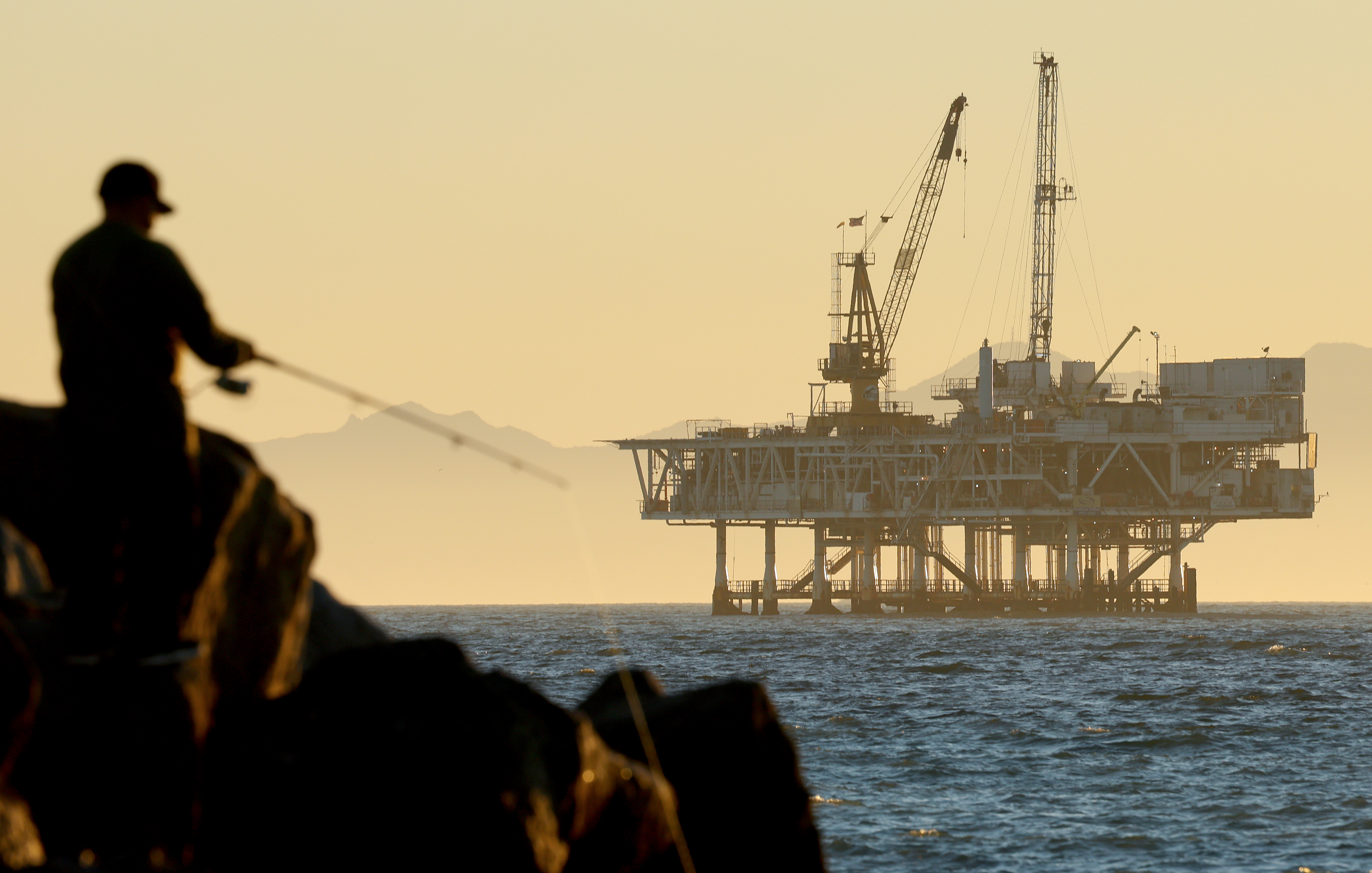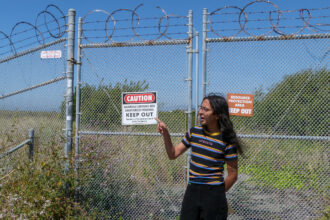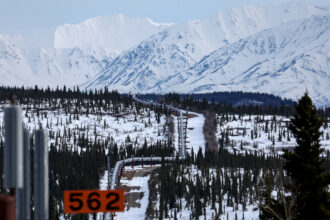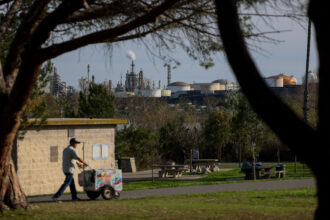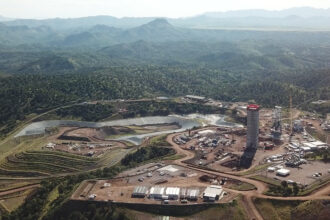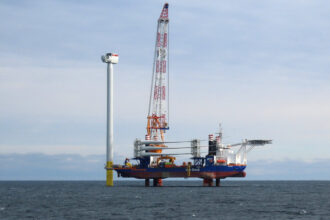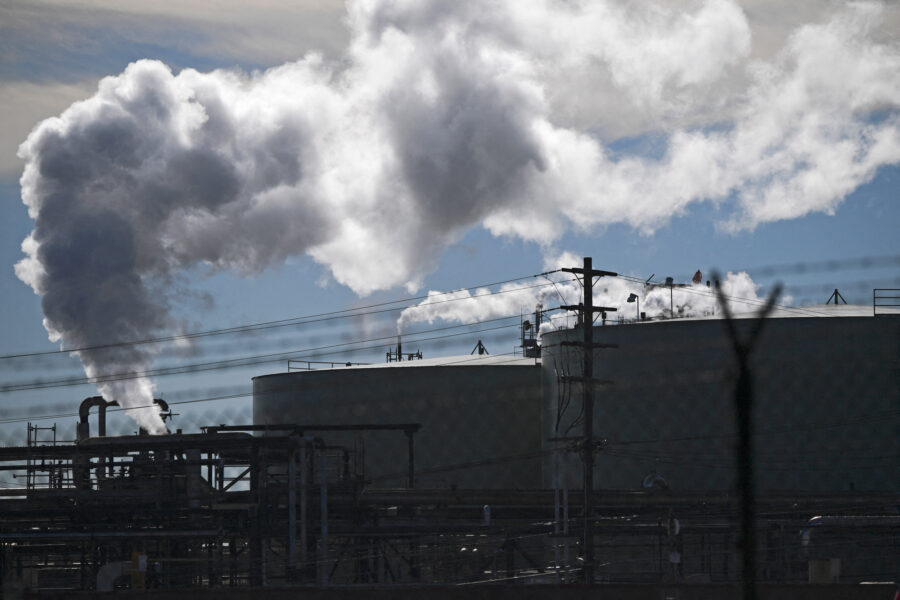It’s not often that the governors of California and Florida are on the same page, but this week they’re aligned in opposition to the White House’s latest plan to expand offshore oil drilling near both their shores.
The Trump administration’s plans, announced Thursday by the Department of the Interior, propose offering as many as 34 offshore drilling leases across nearly 1.3 billion acres off the coasts of Alaska, California and Florida. That would open up waters that haven’t had new leases in decades—or in some cases ever, environmental groups said—and reverse previous policy by the Biden administration that aimed to slow down offshore oil development.
“The Biden administration slammed the brakes on offshore oil and gas leasing and crippled the long-term pipeline of America’s offshore production,” said Interior Secretary Doug Burgum in a statement with the plan’s announcement. “By moving forward with the development of a robust, forward-thinking leasing plan, we are ensuring that America’s offshore industry stays strong.”
Republican Gov. Mike Dunleavy of Alaska praised the move. But California Gov. Gavin Newsom, a Democrat, and Florida Gov. Ron DeSantis, a Republican, both quickly spoke up against it.
“Donald Trump’s idiotic proposal to sell off California’s coasts to his Big Oil donors is dead in the water,” Newsom wrote Thursday on X, echoing his own earlier words. “We will not stand by as our coastal economy and communities are put in danger.”
DeSantis reiterated his support for a 2020 memorandum preventing offshore oil and gas leasing in parts of the Gulf of Mexico—including off Florida’s coast—through 2032.
“President Trump’s 2020 memorandum protecting Florida’s eastern Gulf waters represents a thoughtful approach to the issue,” he wrote on X. “The Interior Department should not depart from the 2020 policy.”
Meanwhile, at COP30 in Brazil, amid fire and extreme heat, dozens of world leaders have called for a swift phaseout of oil, gas and coal, as global temperatures and emissions soar past the thresholds outlined in the Paris Agreement a decade ago. The U.S. federal government is notably absent, although the country’s civil sector, oil and gas lobbyists and Newsom himself have made their presence known.
Last month, more than 100 lawmakers signed a letter to President Donald Trump and Burgum, strongly opposing any new offshore oil and gas leases off the Atlantic and Pacific coasts, in the Arctic Ocean and in the Eastern Gulf.
“This is a matter of national consequence for coastal communities across the country, regardless of political affiliation,” the letter read.
Both California senators signed the letter, but neither senator from Florida or Alaska did.
On Thursday after the announcement, Republican U.S. Sen. Rick Scott of Florida posted on X that he fought for years to keep drilling off Florida’s coasts and supported the 2020 memorandum.
“I have been speaking to [Burgum] and made my expectations clear that this moratorium must remain in place, and that in any plan, Florida’s coasts must remain off the table for oil drilling to protect Florida’s tourism, environment, and military training opportunities,” the post read.
Asked for comment, the White House deferred to the Department of the Interior, which did not respond.
Although Trump’s plans have prompted bipartisan condemnation—and lawmakers are already readying to fight the move—the announcement received a more positive reception from the oil industry.
Mike Sommers, CEO of the American Petroleum Institute, an oil and gas industry group, said in a statement that the plan is a “historic step” in developing the country’s offshore oil resources. API has for decades lobbied to block climate action and support fossil fuel expansion.
“We applaud Secretary Burgum for laying the groundwork for a new and more expansive five-year program that unlocks opportunities for long-term investment offshore and supports energy affordability at a time of rising demand at home and abroad,” Sommers said.
According to a New York Times analysis, the oil and gas industry contributed at least $75 million to Trump’s 2024 election campaign, which doesn’t account for “dark money” donations that can’t be tracked. Trump has responded by slashing renewable energy initiatives and doubling down on fossil fuels. According to the Brennan Center for Justice at New York University School of Law, industry executives are already making millions of dollars off their investment.
Still, the availability of leases doesn’t guarantee that drilling will occur, said Frank Maisano, a senior principal at Bracewell LLP, a lobbying firm that represents clients across the energy sector, including oil and gas.
“Nobody knows what will happen,” Maisano said, adding that it’s possible companies may take on leases without drilling immediately.
Maisano said he felt positively about the White House plan because it creates clarity on where leases are available. He added that he believes activity off the Florida coast, which has infrastructure and clear drilling opportunities, is more likely than off California.
Brian Prest, an economist and fellow at the energy and environment research nonprofit Resources for the Future, said in an email to Inside Climate News that development of these leases could be fraught.
“It’s not clear to what degree there will be industry interest in these leases, but even if some lease sales do end up getting bought, I wouldn’t be surprised if ten years from now there’s no new development to show for it,” Prest wrote. “But who knows!”
California has led efforts to restrict offshore drilling since a devastating 1969 oil spill off the Santa Barbara coast. In Florida, concerns about tourism, recreation and coastal ecosystems—as well as the disastrous 2010 Deepwater Horizon oil spill in the Gulf—have prompted bipartisan support for moratoriums on offshore drilling.
In Alaska, the announcement represents the latest of Trump’s plans to expand fossil fuel development in the state. Among them are six oil lease sales in the Cook Inlet, a crucial Beluga whale habitat. The Republican-controlled Congress, meanwhile, recently overturned a measure that protected nearly half of Alaska’s National Petroleum Reserve—the largest block of public land in the country, which contains diverse wetland ecosystems and key habitats—from oil drilling.
Recently, ConocoPhillips proposed exploratory drilling in the Arctic wilderness, threatening the migratory route of a caribou herd relied on by a local community for subsistence hunting.
All three states are already seeing acute impacts of climate change, including sea level rise, precipitation changes, heat waves and coastal flooding and erosion.
The Los Angeles wildfires at the start of the year killed an estimated 440 people and were among the most costly domestic weather-related disasters on record. Climate change is driving increased wildfire risks across the state.
Florida faces retreating shores and increasingly intense storms, alongside an ensuing home insurance crisis. Last year, Hurricanes Helene and Milton hit the state hard, killing more than 70 people, according to the National Hurricane Center.
Alaska—parts of which are warming four times faster than the rest of the country—is experiencing melting glaciers and food insecurity. Recently, entire villages were destroyed and more than 1,500 people were displaced by Typhoon Halong, supercharged by unusually warm waters.
Environmental groups blasted the White House announcement. Irene Gutierrez, a senior attorney at the Natural Resources Defense Council, said the potential impact is significant.
“This is a bad idea,” she said. “This is looking towards the past rather than to the future, and this is really a time when we should be investing in renewable energy and affordable energy and not these sort of speculative oil developments off the coast.”
Gutierrez added that drilling in Arctic waters off Alaska’s shores is particularly risky given wind and icy conditions that would make it difficult to clean up oil spills, as well as local dependence on fish. She urged members of the public to weigh in on the administration’s plan. The public comment period will begin on Nov. 24.
“We are tracking next developments in the plan to see what happens and to see if the administration actually listens to what the public wants here, which is no dangerous oil developments off the coast,” she said.
About This Story
Perhaps you noticed: This story, like all the news we publish, is free to read. That’s because Inside Climate News is a 501c3 nonprofit organization. We do not charge a subscription fee, lock our news behind a paywall, or clutter our website with ads. We make our news on climate and the environment freely available to you and anyone who wants it.
That’s not all. We also share our news for free with scores of other media organizations around the country. Many of them can’t afford to do environmental journalism of their own. We’ve built bureaus from coast to coast to report local stories, collaborate with local newsrooms and co-publish articles so that this vital work is shared as widely as possible.
Two of us launched ICN in 2007. Six years later we earned a Pulitzer Prize for National Reporting, and now we run the oldest and largest dedicated climate newsroom in the nation. We tell the story in all its complexity. We hold polluters accountable. We expose environmental injustice. We debunk misinformation. We scrutinize solutions and inspire action.
Donations from readers like you fund every aspect of what we do. If you don’t already, will you support our ongoing work, our reporting on the biggest crisis facing our planet, and help us reach even more readers in more places?
Please take a moment to make a tax-deductible donation. Every one of them makes a difference.
Thank you,


